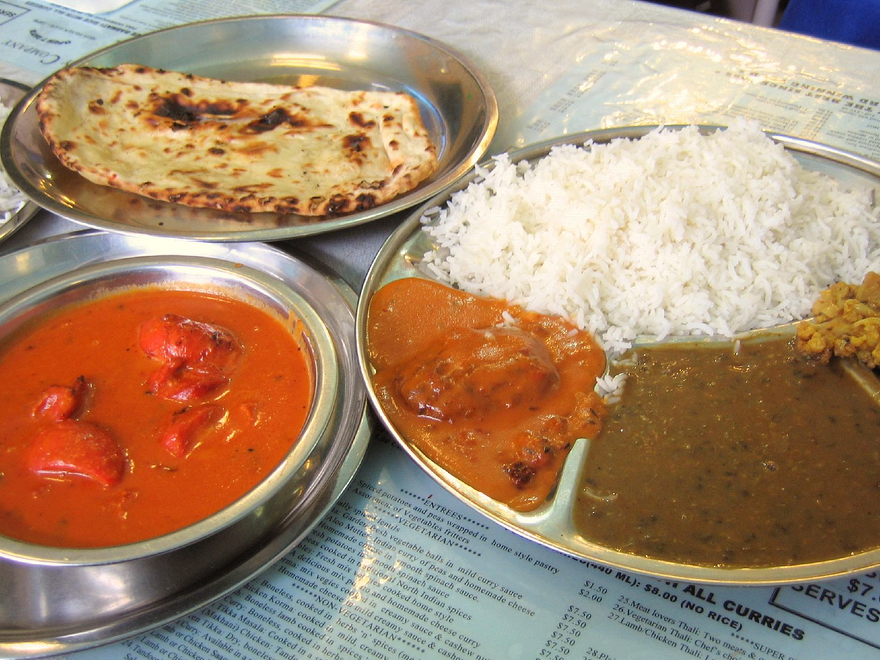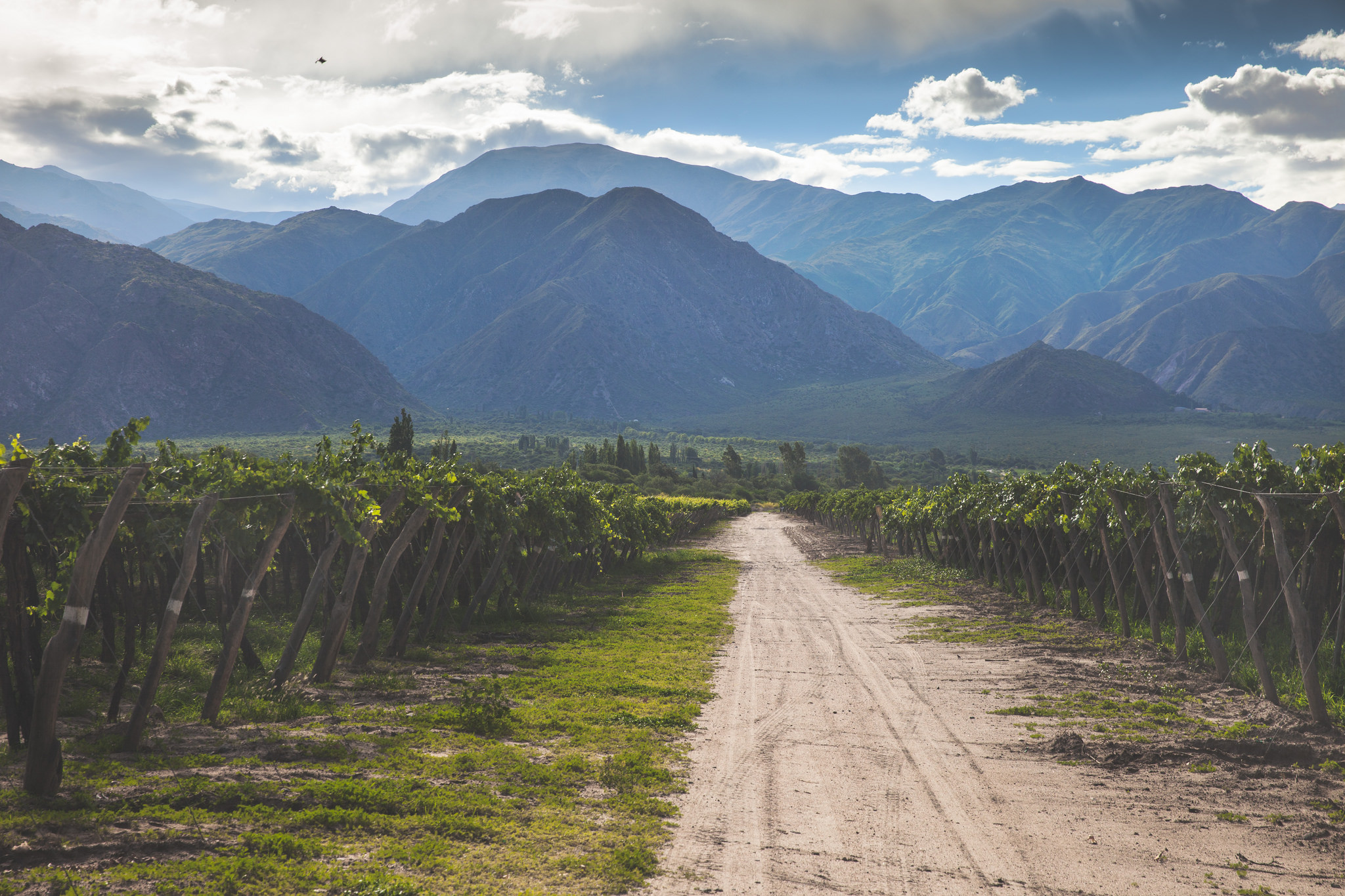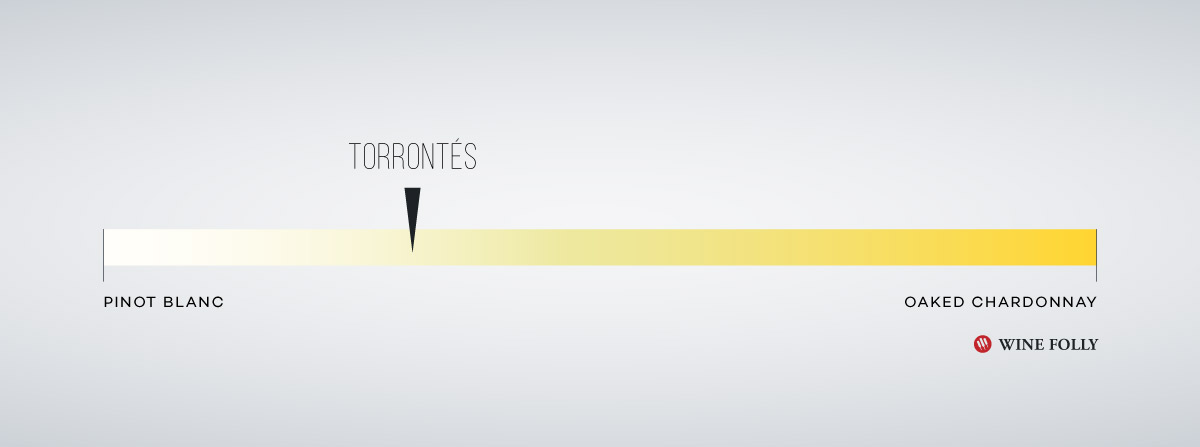Table of Contents
Primary Flavors
- Meyer Lemon
- Peach
- Rose Petal
- Geranium
- Citrus Zest
Taste Profile
Handling
SERVE
38–45°F / 3-7°C
GLASS TYPE
White
DECANT
No
CELLAR
3–5 Years
Food Pairing
Even though Torrontés smells sweet, it’s usually quite dry, making it a great match with savory dishes that feature exotic spices, fruit, and aromatic herbs.

With its light aromatic style and cool serving temperature, Torrontés is an excellent match with the foods of the spice route (Indian and Asian). Torrontés makes a great match alongside coconut curries and Thai spice peanut dishes. In terms of intensity of food, opt for light colored meats such as poultry, fish, and tofu because they won’t overwhelm the delicate flavor, aroma, and acidity in the wine.
Examples
- Meat
- Chicken Satay, Roast Chicken, Glazed Tofu, Teriyaki Seitan, Curried Shrimp, Pork Chops, Chinese Barbecue Pork
- Cheese
- Feta, Gruyere, Swiss Cheese, Paneer Cheese, Pecorino, Asiago, Manchego, Farmer’s Cheese
- Herb/Spice
- Cilantro, Thai Basil, Mint, Shiso, Parsley, Chives, Sichuan Pepper, Ginger, Shallot, Cayenne Pepper, Turmeric, Ajwain, Garam Masala, Coriander, Cumin, Lemon, Hot Sauce
- Vegetable
- Butternut Squash, Summer Squash, Yam, Potato Cucumber, Carrot, Zucchini, Snap Peas, Radish, Red Pepper, Green Onion, Onion, Cauliflower, Fresh Grapes, Citrus Fruits, Coconut, Mango
Torrontés Wine from Argentina
Torrontés is an aromatic white wine that originated in Argentina. The wine smells sweet but is usually made in a dry style, and the best Torrontés wines come from the high-elevation vineyards in Salta, Argentina. Find out more about this rare and special wine from South America.
Torrontés is similar to other aromatic white wines, including Riesling and Muscat Blanc (Moscato). The major difference between Torrontés and these white wines is that Torrontés is commonly made in a dry style. This makes it a very interesting wine to enjoy because its salty, lean taste contrasts with its sweet, perfumed aromas.
- Expect To Spend
- $8–$14 for an excellent bottle of dry Torrontés wine.
- Similar Wines
- You’ll find Albariño and dry styles of Riesling and Muscat Blanc (dry “Moscatel” is mostly found in Portugal) to be similar in aroma and taste to Torrontés.
Expert Intel

If you really get into this wine, you’ll learn that Torrontés is actually a group of three distinct varieties: Torrontés Riojano, Torrontés Sanjuanino and Torrontés Mendocino. All varieties are native to South America and are a natural cross between the Mission grape (País, a red grape) and the sweet Muscat of Alexandria grape (also known as Zibbibo).
Of the three varieties, the most popular (and most delicious) is the Torrontés Riojano grape, which grows dominantly in the northern region of Salta, Argentina. The other areas of Mendoza and La Rioja produce a lot of Torrontés wines with the other varieties of Torrontés Sanjuanino and Torrontés Mendocino, and these tend to be much simpler in aroma and taste and often made in a sweet style.

